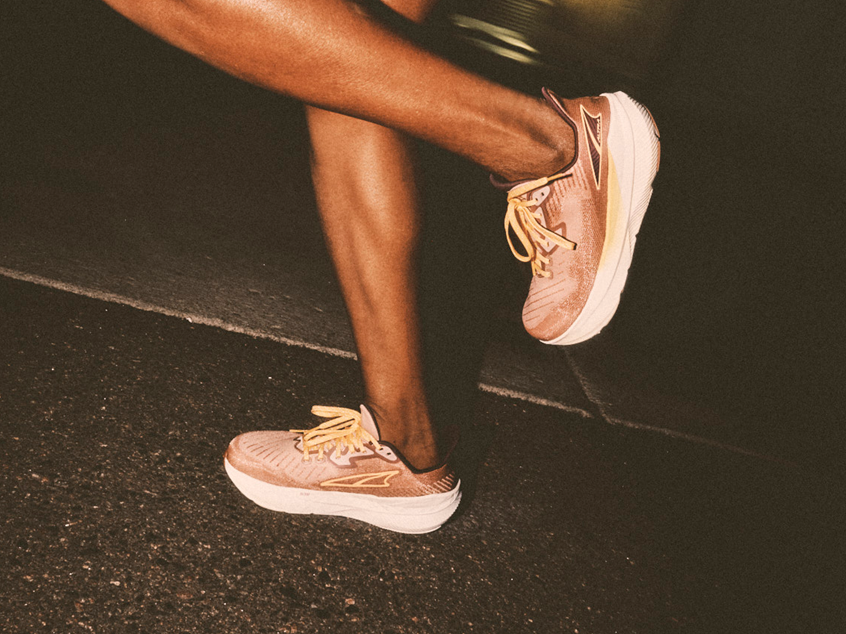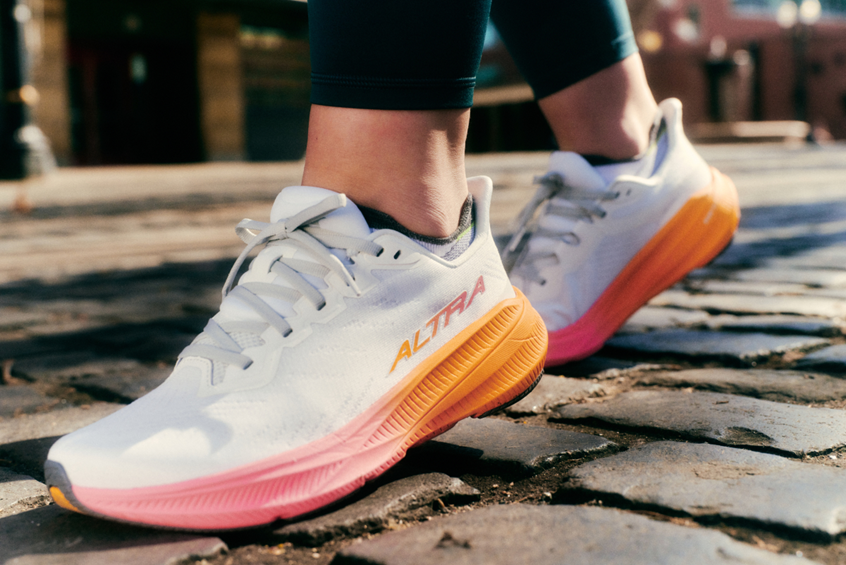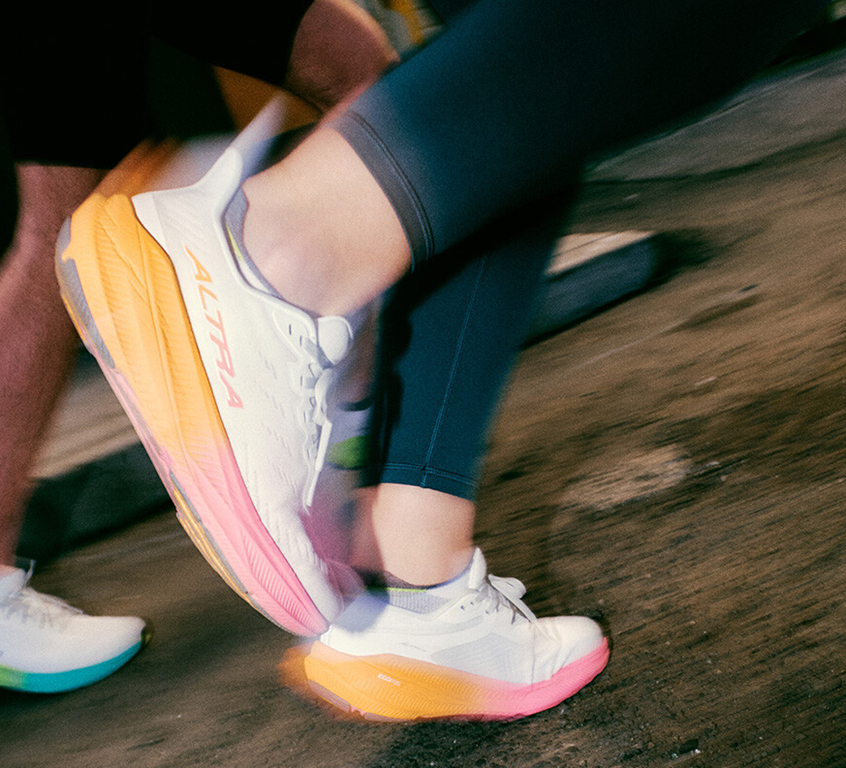
The Science Behind Women’s Running Shoes: Fit and Features
Are you searching for your best fit in women’s running shoes, but are not sure where to start? The trick is not about style; it’s about choosing something that matches your foot shape and running style, supporting every step and making it feel easier.
Find out how choosing properly fitting and thoughtfully engineered running shoes can lower your risk of injury, give you confidence, and optimise your running experience.
What Makes a Women’s Road Running Shoe?

Today, you can find a variety of womens road running shoes in designs and colours that fit your aesthetic. They have a unique shape made to deliver comfort, support, and protection every time your foot hits the pavement. Understanding the key features and benefits of ladies’ road running shoes can make a significant difference in your running journey.
Key Features
- Cushioning:Quality shoes with ample cushioning absorb impact during running. That helps reduce joint stress and lowers the risk of injuries, especially useful for long-distance runners.
- Arch Support: This feature keeps your foot stable and secure, preventing issues like plantar fasciitis, a painful inflammation of the tissue connecting the heel bone to the toes.
- Durability and Flexibility: When you choose high-quality shoes designed to support your foot’s natural movement, you’ll enjoy lasting performance and more efficient runs.
- Fit and Sizing: A proper fit in running shoes, like a wider toe box, is essential to allow your toes to spread freely and prevent discomfort and issues like blisters.
- Breathability: A good shoe is made from breathable materials such as mesh and synthetics for good airflow, helping keep your feet cool with minimal sweat-related irritation.
- Stability and Motion Control: This feature enhances foot alignment during movement, making things more comfortable for you.
Why Are Women’s Running Shoes Different?
Did you know that women’s running shoes differ from those of men? As a woman, your feet have higher arches, a narrower heel, and a more tapered shape. And road running shoes for women are tailored to match these anatomical differences. Women also tend to weigh less than men, so the cushioning in your shoes is softer and better optimised to absorb impact without feeling stiff.
All of these adjustments help in multiple ways, such as reducing fatigue and improving stability. Additionally, they help prevent common injuries, which is highly important for runners of both long and short distances.
It’s not a rare occasion for ankles to tip inward while running, which is why women’s running shoes have extra cushioning and support proper alignment. Choosing the right pair can lead to optimal comfort, successful performance, and fewer injuries.
Types to Choose from
Neutral Running Shoes
Having a natural arch and a neutral gait means you don’t overpronate or underpronate, and if this is your case, go for neutral running shoes. This type of shoe offers balanced cushioning and a flexible sole that supports natural foot movement. They’re a great fit for medium to high arches and can be worn on various terrains, especially on roads.
Stability Running Shoes
If you overpronate and your foot rolls inward while running, you will appreciate finding out about stability running shoes. They feature a combination of a supportive midsole, arch support, and a stable heel counter to help maintain proper foot alignment. These features help reduce injury factors and allow you to run more efficiently. And you don’t have to be a professional long-distance runner to enjoy stability shoes, as they offer comfort and support across various running styles.
Motion Control Shoes
For severe overpronators or flat-footed runners, motion control shoes are your best option. The firm midsoles, structured heel counters, and improved arch support guide the foot through its natural motion cycle. They seem heavier, but they help keep your feet aligned, reduce the strain on your legs, and are still perfect for running long distances.
Minimalist Running Shoes
If you were born with strong feet and want to enhance your connection to the ground, consider trying out minimalist shoes. Their features, like minimal cushioning, make them lightweight and flexible.
They are pretty flat considering their low heel-to-toe drop and thinner sole. That gives you a better running form and stronger feet, and at the same time reduces the risk of injury associated with excessive cushioning.
Maximalist Running Shoes
For maximum comfort and shock absorption, invest in a good maximalist running shoe. Opposed to the minimalist kind, they are made with thicker midsoles and plush cushioning, ideal for long runs and softer landings.
Runners have different running styles, so choosing from these types of running shoes based on your needs will improve your overall running performance.
Common Mistakes and Tips for First-Time Buyers
It’s not unusual to make a mistake when buying your first pair of running shoes. It can be a little overwhelming figuring out what works best for you without previous experience. Here are some common mistakes to avoid and ensure comfort, performance, and injury prevention:
Mistakes to Avoid:
- Making a decision based on the design: As women, style matters, but let’s not forget that function is key.
- Ignoring your foot type: Flat feet, high arches, or overpronators, they all require different support.
- Buying the wrong size: A long run can cause your feet to swell, so take that into consideration and size up slightly.
- Skipping a gait analysis: Knowing how you run helps match the right shoe.
- Not testing the fit: Running shoes can feel a little different, so it’s best to take a couple of steps around the store before committing.
Smart Tips:
- Visit a specialty running store and ask for expert advice.
- Go shoe shopping later in the day when your feet are naturally more swollen.
- Try the shoes with the socks you’ll want to wear when running.
- Replace shoes every 480–800 kilometres to maintain support.
Final Thoughts

Choosing the right women’s running shoes can improve your running experiences. By understanding your foot shape, stride, and support needs, you’re more likely to find your fit. The right fit, cushioning, and style can improve your running performance and reduce the risk of injuries. Take time to find your perfect pair and enjoy every step with confidence and ease.

